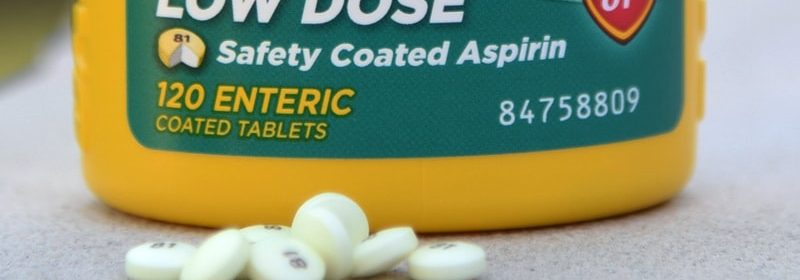Peptic Ulcer Risk in New Users of Low-Dose Aspirin

New users of low-dose aspirin — but not “prevalent” users — have a significantly increased risk of developing gastric and duodenal ulcers, a finding that highlights the importance of weighing the risks and benefits of starting low-dose aspirin therapy, researchers say.
Before starting a low-dose aspirin regimen, “a careful weighing of risks and benefits is recommended,” write Ben Schöttker, PhD, with the German Cancer Research Center in Heidelberg, and colleagues. Once low-dose aspirin therapy is started, monitoring for adverse events is recommended to ensure safe long-term use, they add.
The study was published online in Alimentary Pharmacology and Therapeutics.
While low-dose aspirin has been shown to be a risk factor for peptic ulcer disease, previous cohort studies may have underestimated the risk because the researchers did not employ a new-user design, the investigators note. This is important because gastrointestinal bleeding occurs more often early after initiation of low-dose aspirin therapy than in later years.
Schöttker and colleagues evaluated associations between low-dose aspirin and the occurrence of gastric and duodenal ulcers in both prevalent users and new users. (In this study, “prevalent users” are people who were taking low-dose aspirin at baseline and had generally been taking aspirin for some time before study follow-up began.) Data for the study were derived from 7737 participants in the German ESTHER study and 213,598 from the UK Biobank with more than 10 years of follow-up.
In prevalent users, low-dose aspirin was not significantly associated with gastric ulcers in either cohort. There was a weak statistically significant association with duodenal ulcer in the UK Biobank (hazard ratio [HR], 1.27; 95% CI: 1.07 – 1.51) but not in ESTHER (HR, 1.33; 95% CI: 0.54 – 3.29).
When restricting the exposure to only new users, low-dose aspirin use was associated with a significant 1.8-fold increased risk of gastric ulcer incidence in the UK Biobank (HR, 1.82; 95% CI: 1.58 – 2.11) and a 2.8-fold increased risk in ESTHER (HR, 2.83; 95% CI: 1.40 – 5.71) in multivariable models.
As for duodenal ulcers in new users, low-dose aspirin use was associated with a 1.7-fold increased risk in the UK Biobank (HR, 1.66; 95% CI: 1.36 – 2.04) and with a 3.9-fold increased risk in ESTHER (HR, 3.89; 95% CI: 1.46 – 10.42).
The findings from these two large cohort studies show that low-dose aspirin use is a “strong and independent” risk factor for both gastric and duodenal ulcers among new users of low-dose aspirin but not among prevalent users.
People taking low-dose aspirin for years who do not experience gastrointestinal symptoms may tolerate the drug well, the authors point out.
“Important” Study
“This is an important study,” Ashwin Ananthakrishnan, MD, MPH, a gastroenterologist with Massachusetts General Hospital and Harvard Medical School in Boston, told Medscape Medical News.
“Much of the literature on aspirin (or NSAIDs) and gastric/duodenal ulcer risks are from full-dose aspirin or its equivalent,” he explained. “Less is known about the safety or risks of low-dose aspirin.
“This study, using two complementary data sources, showed that low-dose aspirin was associated with an increase in risk among new users,” said Ananthakrishnan, who was not involved in the analysis. “However, while there is an increase in risk, any potential increase must be balanced against the benefit of low-dose aspirin for its other health effects, including cardioprotection.
“In addition, that there was no association among prevalent users suggests that in those who have been on low-dose aspirin for many years without any gastric or duodenal ulcers, continued use is likely safe, provided there continues to be benefit from it for other indications,” he added.
The study had no commercial funding. Schöttker and Ananthakrishnan have disclosed no relevant disclosures financial relationships.
Aliment Pharmacol Ther. Published online May 27, 2022. Full text
For more news, follow Medscape on Facebook, Twitter, Instagram, and YouTube.
Source: Read Full Article